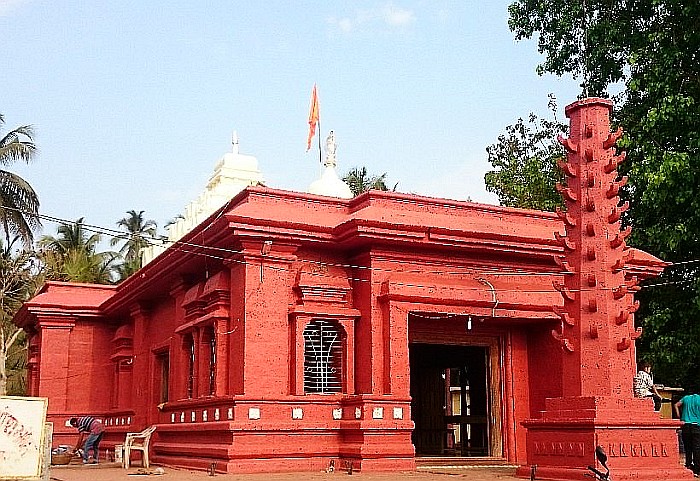Photos: Draft Craft
Nestled within the serene landscapes of Raigad division in Konkan, ancient temples stand as timeless witnesses to the region’s rich cultural tapestry. Each temple mentioned echoes stories of devotion and architectural marvel, offering a glimpse into the spiritual legacy of ancient times. From the intricately carved sculptures to the tranquil sanctuaries, these temples not only serve as places of worship but also as cultural landmarks steeped in history. Nandini Rao explores their legendary mystic and charm.
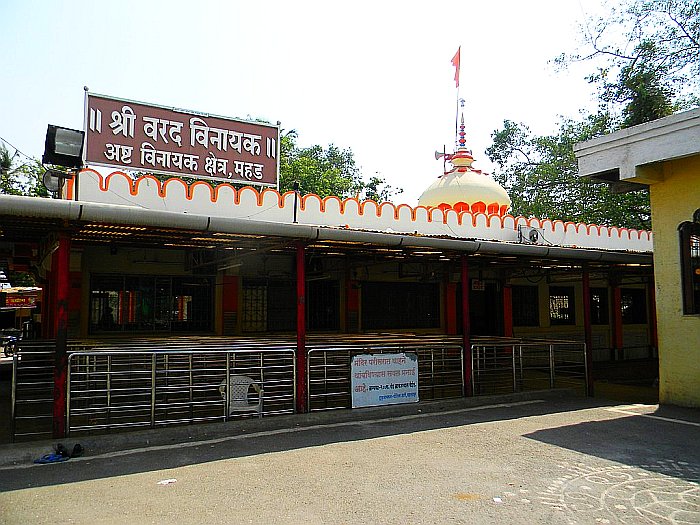
One of Maharashtra’s most visited regions, Raigad, located in the state’s Konkan division, has a rich religious and mythological heritage. Previously known as Kulaba (Colaba) district, Raigad got its name from the iconic Raigad Fort which was the capital of the Maratha Empire. In 1674 AD, Chhatrapati Shivaji Maharaj renovated the hill fort and made it his capital. Apart from the many forts, Raigad is also known for its ancient and exquisite temples that draw devotees and tourists from far and beyond. The region is peppered with shrines and places of religious importance bearing testimony to Raigad’s significance in Hindu mythology and history.
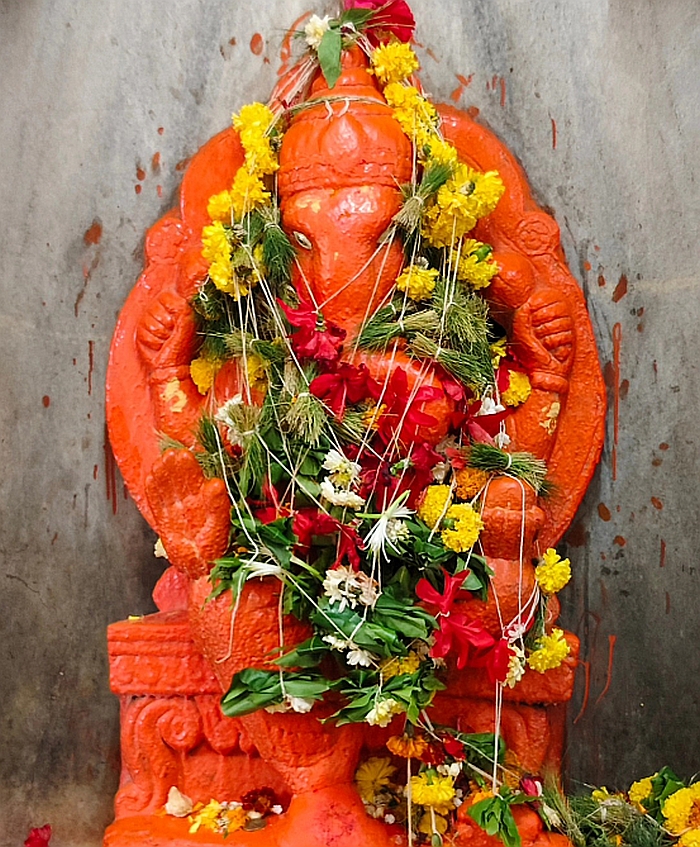
In Mahad, for example, the Varadvinayak Temple which was restored in 1725 AD is one of the eight Ashtavinayak temples dedicated to Lord Ganesh in Maharashtra. Located in Mahad region of Raigad, the ancient temple is believed to have been restored by Peshwa General / Subedar Ramji Mahadev Biwalkar. Situated in Mahad’s Khalapur taluka near Karjat, the temple also houses a mushak, shivlinga and the navagraha devas (nine planetary deities). It is an important landmark in the Ashtavinayak pilgrimage circuit and the Ganesh idol here is self-manifested or self-originated, known as a swayambhu. It was found in the lake adjoining the premises.
The temple structure is relatively simple, with a tiled roof, a 25-foot high dome with a golden pinnacle, and a golden summit i.e. the kalas carved on top. The sanctum sanctorum is eight feet long and eight feet wide, made of stone and surrounded by beautifully carved elephant sculptures. The iconic temple is home to two Ganesh idols – the original weathered idol is placed outside the sanctum, while a new consecrated idol resides within. A gaumukh on the north side of the temple provides the holy tirtham (water). A sacred pond is also located on the western side of the temple making the zone picturesque and tourist-friendly.
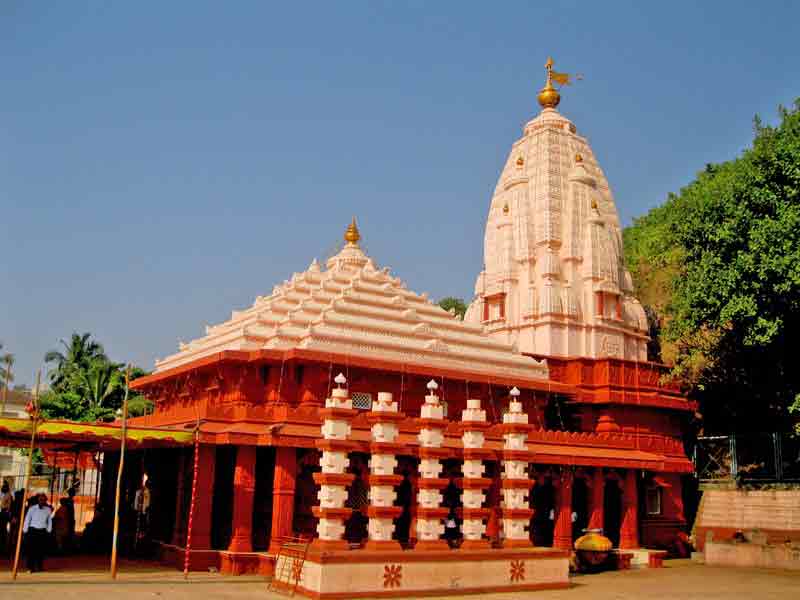
Legends and mythology
The Varadvinayak Temple is believed to be the site where Lord Ganesh, as Varad Vinayak (the giver of boons and prosperity), resides. Legend says King Bhima of Koudinyapur and his wife, childless and in forest penance, met Sage Vishwamitra who gave them the ekashar gajana mantra, leading to their son Rukmaganda’s birth. During a hunting trip, Rukmaganda visited Rishi Vachaknavi’s hermitage, where his wife, Mukunda, fell in love with the handsome and virtuous prince who declined her and left. Later, Indra disguised as Rukmaganda fathered Gritsamada with Mukunda.
When Gritsamada learnt the truth of his birth, he cursed Mukunda to become the thorn-bearing Bhor plant and was cursed by her in turn. A celestial voice revealed Gritsamada as Indra’s son, leaving them both regretful. While Mukunda transformed, Gritsamada left for Pushpak forest to pray to Lord Ganesh for penance. Ganesh granted Gritsamada a boon that he will bear a son whom only Shiv could defeat. A grateful Gritsamada built a temple for Lord Ganesh, the Varadvinayak, in what is now Bhadraka forest.
The stone idols of Riddhi and Siddhi are also enshrined in the sanctum. The Varadvinayak Temple is a popular pilgrimage site, attracting devotees throughout the year. On festivals like Magha Shukla Chaturthi, which is observed piously in Konkan zone, huge crowds gather at the temple. The Varadvinayak Temple is also known for its architectural beauty, spiritual significance and ancient history.

Another Ashtavinayak temple, built in 1640 AD and renovated in 1760, is the Ballaleshwar Temple in Pali village of Raigad. This temple is unique among the Ashtavinayak temples as it is the only one named after a devotee, Ballal. As per legend, a young devotee of Lord Ganesh named Ballal was tortured by his father for worshipping Ganesh. The lord, pleased by the boy’s devotion, appeared before him, healed his wounds and granted him a boon that he would be known by his name in this temple. The name Ballaleshwar translates to ‘the lord of Ballal’. Here, the idol is uniquely dressed like a Brahmin.
The temple was originally constructed in 1640 AD by Moreshwar Vitthal Sindkar. The original wooden temple was later renovated in 1760 AD, with a new stone structure designed by Shri Fadnis. The temple was carefully positioned, facing east, so that the first rays of the rising sun illuminate the idol of Ganesha. The temple complex features two sanctums – an inner sanctum 15 feet high and an outer sanctum 12 feet high. The outer sanctum contains an idol of a mushak holding a modak, facing the main Ganesha idol which is seated on a stone throne, facing east with its trunk turned left. The murti is adorned with a silver backdrop displaying the Siddhi and Riddhi deities.
The temple features ancient wooden architecture with a shikhara adorned with intricate carvings of peacocks and elephants. It also houses a bell brought back by Peshwa Chimaji Appa following his victories over the Portuguese in Vasai and Sasti. Ballaleshwar Temple is a prominent pilgrimage site, with major festivals celebrated during Bhadrapada and Magha months. The temple complex has eight pillars, one inner sanctum, an outer sanctum, two lakes and accommodations for devotees.
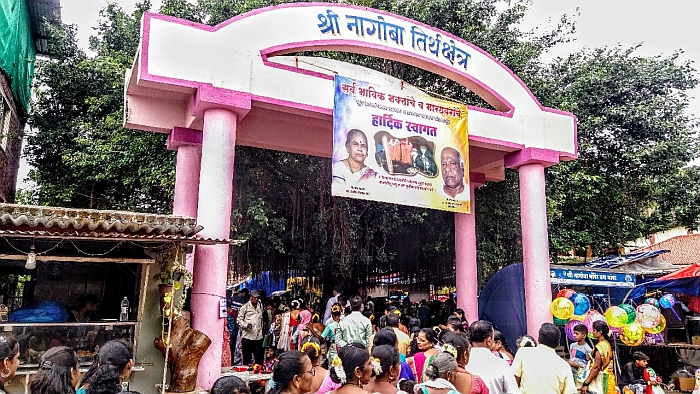
Where Gods reside
One of the most interesting zones in Raigad is Awas, located across the Arabian Sea from Mumbai and accessible through road and water transport. Literally translating to ‘abode of all gods’ and true to its name, the quaint coastal village of Awas is home to several temples. The most significant being the Shree Nagoba Tirthkshetra or the Nagoba Temple in the heart of the village. The temple is more than 350 years old and is a reminder of the existence of three sages who lived there, healed people, and finally, took a samadhi at the same spot. Here, the most important day is the Nag Panchami when devotees from neighbouring villages and towns visit the temple – from dawn till midnight – to pray to their Nagoba. The day is observed through a fair or a mela where locals and visitors partake in fun activities, shopping, buying sweets, eating snacks, playing games, etc.
Among the many temples in Awas – the Kalbhaireshwar Temple is located on a small cliff atop a pond surrounded by beautiful trees. The members of the Bhagat community in Awas have been the caretakers of this temple for generations. The Ganesh temple in the village is a colourful structure with multi-hued walls and a sanctum with the idol of Shree Vakratunda Ganesha which is swayambhu. Several centuries ago, the villagers found the idol buried in the ground.
Another popular religious and tourist site near Awas is the Kankeshwar Devasthan – an ancient temple situated atop a hill near the village of Mapgoan, approximately 13 km from Alibaug. It is dedicated to Lord Shiva, the principal deity in Hinduism and renowned for its architectural splendour. The temple is accessed via a series of steps which were built by the Diwan of Sardar Raghoji Angre called Govind Rangdas. Inside the temple rests a four-feet long shivlinga which is a site in itself, just like the breath-taking forested ambience of the temple.
Built in the Hoysala architectural style, which flourished between the 11th and 14th centuries under the Hoysala Empire, the temple features a garbhagriha (sanctum sanctorum), a sabhamandapa (assembly hall), and a pushkarni (water tank). Here, traditional rituals are predominantly conducted by members of the Gurav family. As per legend, this temple was built by the Pandavas when they were on their exile to seek blessings of Lord Shiva. This is also a swayambhu temple.
Serene locales
A hidden gem, the Goteshwar Temple in Dhokawade, around two km from Awas is a sight to behold. This ancient temple, dedicated to Lord Shiva, is not just a place of worship but a destination that offers a serene retreat for tourists seeking a blend of spirituality, history, and natural beauty. The temple’s origins are shrouded in local legends and folklore.

The intricate carvings adorn the temple walls tell stories of mythological events and deities, offering a glimpse into the artistic brilliance. The temple, dedicated to Lord Shiva, is situated at the banks of a lake lines with thick-foliaged trees that offer it a photogenic quality making it the perfect venue for pre-wedding photoshoots.
Goteshwar temple’s architecture is a harmonious blend of traditional Indian temple design and unique local influences. The towering shikhara (spire) and the beautifully sculpted pillars are a visual treat for visitors. The sanctum sanctorum, where the idol of Lord Shiva resides, exudes a profound sense of peace and divinity.
Dhokawade’s serene environment enhances the spiritual experience at Goteshwar Mandir. Surrounded by lush greenery and picturesque landscapes, the temple offers a perfect escape from the hustle and bustle of city life. The gentle breeze, chirping of birds, and the rustling of leaves create a tranquil atmosphere, making it an ideal spot for meditation and relaxation.
Goteshwar Mandir is not only a spiritual centre but also a hub of cultural activities. Mahashivratri, the grand festival dedicated to Lord Shiva, is celebrated with great fervour and enthusiasm. For tourists, Goteshwar Mandir offers a unique blend of spiritual solace and cultural enrichment. The surrounding zone offers a glimpse into rural Maharashtrian life, with its traditional houses, local markets, and friendly villagers.
Visitors can also explore nearby attractions, such as the pristine beaches of Alibaug, which is just a short drive away. The combination of spiritual and natural attractions makes it a compelling destination for a weekend getaway or a day trip. This serene retreat in the heart of Raigad is symbolic of the timeless charm and spiritual depth of India’s cultural heritage.
Restoring history
Located in Raigad’s Shrivardhan, the Harihareshwar Temple is one of the holiest sites in Raigad and Maharashtra, steeped in history and spiritual significance. The temple is believed to have been blessed by Lord Shiva, earning it the nickname Dev ghar. It is also known as Dakshin Kashi owing to its importance as a pilgrimage centre. Here, Shiv is worshipped as ‘Harihareshwar’ or ‘lord of Hari (Vishnu) and Hara (Shiva)’. It is located at Harihareshwar beach, about 200 km from Mumbai.
Shrivardhan also has a rich history where the first Peshwa, Balaji Vishwanath was born and was the Deshmukh of the town. The temple complex comprises two adjacent shrines: the smaller Kalbhairav Temple and the main Harihareshwar Temple. The former is believed to have been created by Lord Shiva, who blessed Kalbhairav with all mantras while the main temple houses an ancient shivlinga, surrounded by deities of Brahma, Vishnu and Parvati.

The temple’s history is intertwined with the Peshwas, the prime ministers of the Maratha Empire. The Peshwas, including Bajirao Peshwa I, contributed significantly to the temple’s construction and renovation as Hari Hareshwar was their family deity. In 1723, Bajirao Peshwa I renovated the temple after it was almost destroyed in a fire, demonstrating the temple’s importance to them.
The temple’s architecture is unique, with a pradakshina route that circumambulates the temple along the seashore. This route is not advisable during high tide, as it can be hazardous. The temple’s serene surroundings, surrounded by hills and the Arabian Sea, add to its spiritual ambiance. Its proximity to the beach makes it a popular tourist destination, offering a blend of spirituality and natural beauty.
Harihareshwar Temple is a significant pilgrimage site, attracting devotees from all over Maharashtra. It is particularly revered during festivals like Mahashivratri, when devotees throng the zone to seek blessings. The town of Harihareshwar is surrounded by Harihareshwar, Harshinachal and Pushpadri hills.
In Diveagar, a village located in Shrivardhan, Raigad lies the Suvarna Ganesh Temple that contains a centuries-old, one kg gold idol of Lord Ganesha that was found buried below a coconut plantation nearby. It is one of the most captivating places of worship in Raigad. The idol was found buried in a copper box along with some ancient ornaments belonging to the deity.
Interestingly, the discovery was made on the auspicious day of Sankashti Chaturthi which is when the discovered idol of gold became an object of religious significance and the primary object of worship. People believe that this gold idol was created to conceal an earlier stone idol of Lord Ganesha, which was already present in the temple. The Suvarna Ganesh Temple is a popular pilgrimage site, attracting devotees from all over Maharashtra, particularly during major festivals such as Ganesh Chaturthi.
It’s no secret that Raigad has some of the best forts from the time of the Maratha Empire such as Raigad Fort, Korlai Fort, Kolaba Fort, Kothaligad Fort, Padmadurg Fort, Harishchandragad Fort, etc. Some of these forts have temples that have been integral to local culture and traditions.
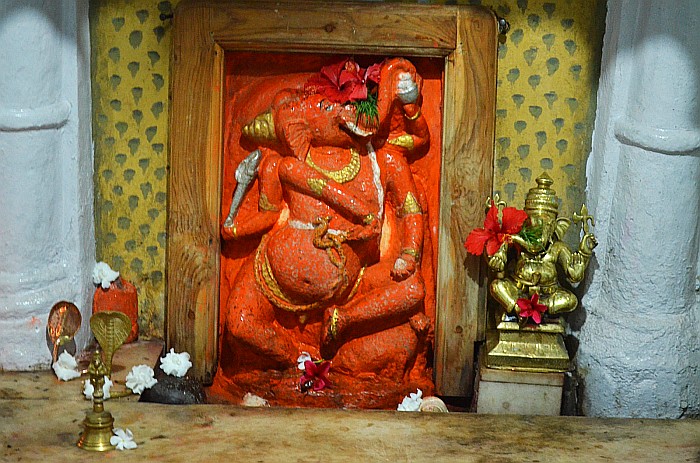
The Jagadishwar Temple, built by Chhatrapati Shivaji, is one such place, situated about 25 km north of Mahad in Raigad Fort. It is believed that Shivaji used to visit this temple everyday. The primary deity of the temple is Lord Jagadishwar and there is a Nandi idol too outside the temple structure.
The Sudhagad Fort situated about ten km from Pali in Raigad also has a religious significance. The temple of Bhoraidevi is situated in this fort that is popular among trekkers and tourists. The fort was earlier called Bhorapgad, named after the patron goddess Bhoraidevi. When it fell to the Marathas in 1657, it was named Sudhagad.

